Information Extraction
Information extraction is the process of automatically extracting structured information from unstructured text data.
Papers and Code
Panprediction: Optimal Predictions for Any Downstream Task and Loss
Oct 31, 2025Supervised learning is classically formulated as training a model to minimize a fixed loss function over a fixed distribution, or task. However, an emerging paradigm instead views model training as extracting enough information from data so that the model can be used to minimize many losses on many downstream tasks. We formalize a mathematical framework for this paradigm, which we call panprediction, and study its statistical complexity. Formally, panprediction generalizes omniprediction and sits upstream from multi-group learning, which respectively focus on predictions that generalize to many downstream losses or many downstream tasks, but not both. Concretely, we design algorithms that learn deterministic and randomized panpredictors with $\tilde{O}(1/\varepsilon^3)$ and $\tilde{O}(1/\varepsilon^2)$ samples, respectively. Our results demonstrate that under mild assumptions, simultaneously minimizing infinitely many losses on infinitely many tasks can be as statistically easy as minimizing one loss on one task. Along the way, we improve the best known sample complexity guarantee of deterministic omniprediction by a factor of $1/\varepsilon$, and match all other known sample complexity guarantees of omniprediction and multi-group learning. Our key technical ingredient is a nearly lossless reduction from panprediction to a statistically efficient notion of calibration, called step calibration.
HADSF: Aspect Aware Semantic Control for Explainable Recommendation
Oct 30, 2025Recent advances in large language models (LLMs) promise more effective information extraction for review-based recommender systems, yet current methods still (i) mine free-form reviews without scope control, producing redundant and noisy representations, (ii) lack principled metrics that link LLM hallucination to downstream effectiveness, and (iii) leave the cost-quality trade-off across model scales largely unexplored. We address these gaps with the Hyper-Adaptive Dual-Stage Semantic Framework (HADSF), a two-stage approach that first induces a compact, corpus-level aspect vocabulary via adaptive selection and then performs vocabulary-guided, explicitly constrained extraction of structured aspect-opinion triples. To assess the fidelity of the resulting representations, we introduce Aspect Drift Rate (ADR) and Opinion Fidelity Rate (OFR) and empirically uncover a nonmonotonic relationship between hallucination severity and rating prediction error. Experiments on approximately 3 million reviews across LLMs spanning 1.5B-70B parameters show that, when integrated into standard rating predictors, HADSF yields consistent reductions in prediction error and enables smaller models to achieve competitive performance in representative deployment scenarios. We release code, data pipelines, and metric implementations to support reproducible research on hallucination-aware, LLM-enhanced explainable recommendation. Code is available at https://github.com/niez233/HADSF
Nirvana: A Specialized Generalist Model With Task-Aware Memory Mechanism
Oct 30, 2025Specialized Generalist Models (SGMs) aim to preserve broad capabilities while achieving expert-level performance in target domains. However, traditional LLM structures including Transformer, Linear Attention, and hybrid models do not employ specialized memory mechanism guided by task information. In this paper, we present Nirvana, an SGM with specialized memory mechanism, linear time complexity, and test-time task information extraction. Besides, we propose the Task-Aware Memory Trigger ($\textit{Trigger}$) that flexibly adjusts memory mechanism based on the current task's requirements. In Trigger, each incoming sample is treated as a self-supervised fine-tuning task, enabling Nirvana to adapt its task-related parameters on the fly to domain shifts. We also design the Specialized Memory Updater ($\textit{Updater}$) that dynamically memorizes the context guided by Trigger. We conduct experiments on both general language tasks and specialized medical tasks. On a variety of natural language modeling benchmarks, Nirvana achieves competitive or superior results compared to the existing LLM structures. To prove the effectiveness of Trigger on specialized tasks, we test Nirvana's performance on a challenging medical task, i.e., Magnetic Resonance Imaging (MRI). We post-train frozen Nirvana backbone with lightweight codecs on paired electromagnetic signals and MRI images. Despite the frozen Nirvana backbone, Trigger guides the model to adapt to the MRI domain with the change of task-related parameters. Nirvana achieves higher-quality MRI reconstruction compared to conventional MRI models as well as the models with traditional LLMs' backbone, and can also generate accurate preliminary clinical reports accordingly.
MoTDiff: High-resolution Motion Trajectory estimation from a single blurred image using Diffusion models
Oct 30, 2025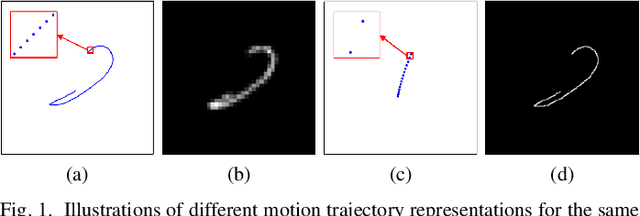
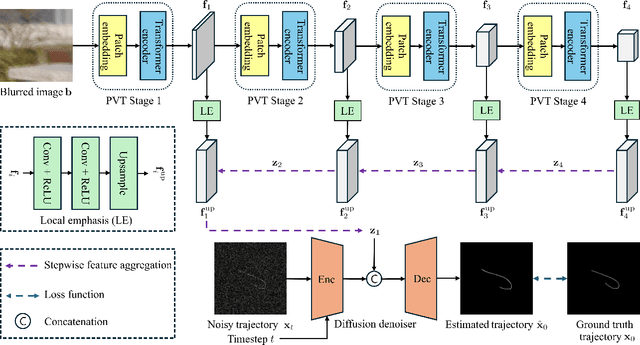
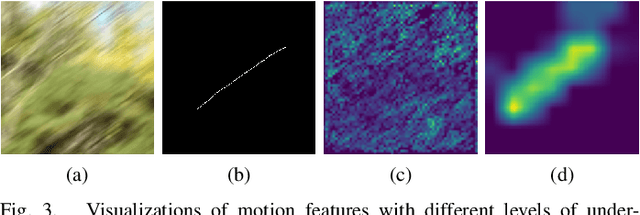

Accurate estimation of motion information is crucial in diverse computational imaging and computer vision applications. Researchers have investigated various methods to extract motion information from a single blurred image, including blur kernels and optical flow. However, existing motion representations are often of low quality, i.e., coarse-grained and inaccurate. In this paper, we propose the first high-resolution (HR) Motion Trajectory estimation framework using Diffusion models (MoTDiff). Different from existing motion representations, we aim to estimate an HR motion trajectory with high-quality from a single motion-blurred image. The proposed MoTDiff consists of two key components: 1) a new conditional diffusion framework that uses multi-scale feature maps extracted from a single blurred image as a condition, and 2) a new training method that can promote precise identification of a fine-grained motion trajectory, consistent estimation of overall shape and position of a motion path, and pixel connectivity along a motion trajectory. Our experiments demonstrate that the proposed MoTDiff can outperform state-of-the-art methods in both blind image deblurring and coded exposure photography applications.
Computational Imaging Meets LLMs: Zero-Shot IDH Mutation Prediction in Brain Gliomas
Nov 05, 2025We present a framework that combines Large Language Models with computational image analytics for non-invasive, zero-shot prediction of IDH mutation status in brain gliomas. For each subject, coregistered multi-parametric MRI scans and multi-class tumor segmentation maps were processed to extract interpretable semantic (visual) attributes and quantitative features, serialized in a standardized JSON file, and used to query GPT 4o and GPT 5 without fine-tuning. We evaluated this framework on six publicly available datasets (N = 1427) and results showcased high accuracy and balanced classification performance across heterogeneous cohorts, even in the absence of manual annotations. GPT 5 outperformed GPT 4o in context-driven phenotype interpretation. Volumetric features emerged as the most important predictors, supplemented by subtype-specific imaging markers and clinical information. Our results demonstrate the potential of integrating LLM-based reasoning with computational image analytics for precise, non-invasive tumor genotyping, advancing diagnostic strategies in neuro-oncology. The code is available at https://github.com/ATPLab-LUMS/CIM-LLM.
Revisiting Generative Infrared and Visible Image Fusion Based on Human Cognitive Laws
Oct 30, 2025Existing infrared and visible image fusion methods often face the dilemma of balancing modal information. Generative fusion methods reconstruct fused images by learning from data distributions, but their generative capabilities remain limited. Moreover, the lack of interpretability in modal information selection further affects the reliability and consistency of fusion results in complex scenarios. This manuscript revisits the essence of generative image fusion under the inspiration of human cognitive laws and proposes a novel infrared and visible image fusion method, termed HCLFuse. First, HCLFuse investigates the quantification theory of information mapping in unsupervised fusion networks, which leads to the design of a multi-scale mask-regulated variational bottleneck encoder. This encoder applies posterior probability modeling and information decomposition to extract accurate and concise low-level modal information, thereby supporting the generation of high-fidelity structural details. Furthermore, the probabilistic generative capability of the diffusion model is integrated with physical laws, forming a time-varying physical guidance mechanism that adaptively regulates the generation process at different stages, thereby enhancing the ability of the model to perceive the intrinsic structure of data and reducing dependence on data quality. Experimental results show that the proposed method achieves state-of-the-art fusion performance in qualitative and quantitative evaluations across multiple datasets and significantly improves semantic segmentation metrics. This fully demonstrates the advantages of this generative image fusion method, drawing inspiration from human cognition, in enhancing structural consistency and detail quality.
A Novel Multi-Reference-Point Modeling Framework for Monostatic Background Channel: Toward 3GPP ISAC Standardization
Nov 05, 2025Integrated Sensing and Communication (ISAC) has been identified as a key 6G application by ITU and 3GPP. A realistic, standard-compatible channel model is essential for ISAC system design. To characterize the impact of Sensing Targets (STs), 3GPP defines ISAC channel as a combination of target and background channels, comprising multipath components related to STs and those originating solely from the environment, respectively. Although the background channel does not carry direct ST information, its accurate modeling is critical for evaluating sensing performance, especially in complex environments. Existing communication standards characterize propagation between separated transmitter (Tx) and receiver (Rx). However, modeling background channels in the ISAC monostatic mode, where the Tx and Rx are co-located, remains a pressing challenge. In this paper, we firstly conduct ISAC monostatic background channel measurements for an indoor scenario at 28 GHz. Realistic channel parameters are extracted, revealing pronounced single-hop propagation and discrete multipath distribution. Inspired by these properties, a novel stochastic model is proposed to characterizing the ISAC monostatic background channel as the superposition of sub-channels between the monostatic Tx&Rx and multiple communication Rx-like Reference Points (RPs). This model is compatible with standardizations, and a 3GPP-extended implementation framework is introduced. Finally, a genetic algorithm-based method is proposed to extract the optimal number and placement of multi-RPs. The optimization approach and modeling framework are validated by comparing measured and simulated channel parameters. Results demonstrate that the proposed model effectively captures monostatic background channel characteristics, addresses a critical gap in ISAC channel modeling, and supports 6G standardization.
Modality Alignment across Trees on Heterogeneous Hyperbolic Manifolds
Oct 31, 2025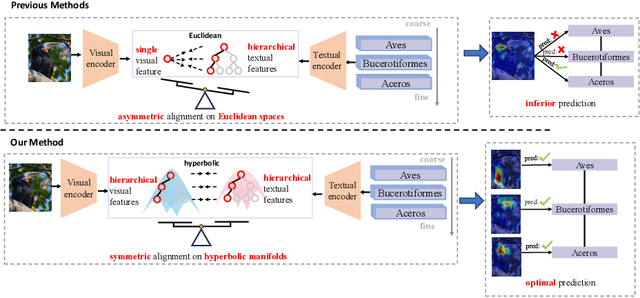
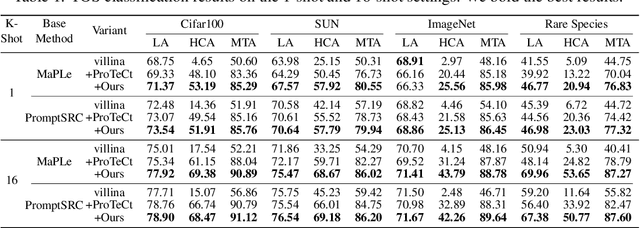
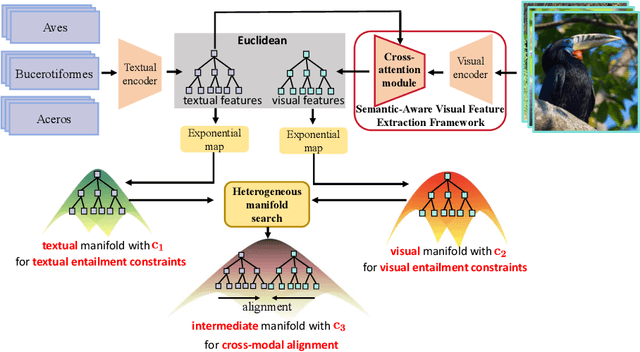

Modality alignment is critical for vision-language models (VLMs) to effectively integrate information across modalities. However, existing methods extract hierarchical features from text while representing each image with a single feature, leading to asymmetric and suboptimal alignment. To address this, we propose Alignment across Trees, a method that constructs and aligns tree-like hierarchical features for both image and text modalities. Specifically, we introduce a semantic-aware visual feature extraction framework that applies a cross-attention mechanism to visual class tokens from intermediate Transformer layers, guided by textual cues to extract visual features with coarse-to-fine semantics. We then embed the feature trees of the two modalities into hyperbolic manifolds with distinct curvatures to effectively model their hierarchical structures. To align across the heterogeneous hyperbolic manifolds with different curvatures, we formulate a KL distance measure between distributions on heterogeneous manifolds, and learn an intermediate manifold for manifold alignment by minimizing the distance. We prove the existence and uniqueness of the optimal intermediate manifold. Experiments on taxonomic open-set classification tasks across multiple image datasets demonstrate that our method consistently outperforms strong baselines under few-shot and cross-domain settings.
Multi-Stage Field Extraction of Financial Documents with OCR and Compact Vision-Language Models
Oct 27, 2025Financial documents are essential sources of information for regulators, auditors, and financial institutions, particularly for assessing the wealth and compliance of Small and Medium-sized Businesses. However, SMB documents are often difficult to parse. They are rarely born digital and instead are distributed as scanned images that are none machine readable. The scans themselves are low in resolution, affected by skew or rotation, and often contain noisy backgrounds. These documents also tend to be heterogeneous, mixing narratives, tables, figures, and multilingual content within the same report. Such characteristics pose major challenges for automated information extraction, especially when relying on end to end large Vision Language Models, which are computationally expensive, sensitive to noise, and slow when applied to files with hundreds of pages. We propose a multistage pipeline that leverages traditional image processing models and OCR extraction, together with compact VLMs for structured field extraction of large-scale financial documents. Our approach begins with image pre-processing, including segmentation, orientation detection, and size normalization. Multilingual OCR is then applied to recover page-level text. Upon analyzing the text information, pages are retrieved for coherent sections. Finally, compact VLMs are operated within these narrowed-down scopes to extract structured financial indicators. Our approach is evaluated using an internal corpus of multi-lingual, scanned financial documents. The results demonstrate that compact VLMs, together with a multistage pipeline, achieves 8.8 times higher field level accuracy relative to directly feeding the whole document into large VLMs, only at 0.7 percent of the GPU cost and 92.6 percent less end-to-end service latency.
Toward Robust Signed Graph Learning through Joint Input-Target Denoising
Oct 26, 2025Signed Graph Neural Networks (SGNNs) are widely adopted to analyze complex patterns in signed graphs with both positive and negative links. Given the noisy nature of real-world connections, the robustness of SGNN has also emerged as a pivotal research area. Under the supervision of empirical properties, graph structure learning has shown its robustness on signed graph representation learning, however, there remains a paucity of research investigating a robust SGNN with theoretical guidance. Inspired by the success of graph information bottleneck (GIB) in information extraction, we propose RIDGE, a novel framework for Robust sI gned graph learning through joint Denoising of Graph inputs and supervision targEts. Different from the basic GIB, we extend the GIB theory with the capability of target space denoising as the co-existence of noise in both input and target spaces. In instantiation, RIDGE effectively cleanses input data and supervision targets via a tractable objective function produced by reparameterization mechanism and variational approximation. We extensively validate our method on four prevalent signed graph datasets, and the results show that RIDGE clearly improves the robustness of popular SGNN models under various levels of noise.
 Add to Chrome
Add to Chrome Add to Firefox
Add to Firefox Add to Edge
Add to Edge